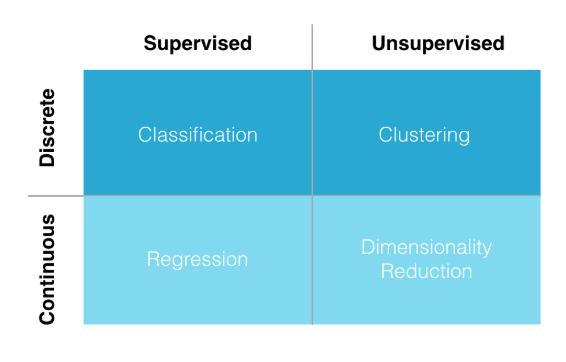11. Unsupervised vs. Supervised Approaches
Supervised vs. Unsupervised Learning
When you are thinking about using machine learning to solve a task, the type of algorithm you’ll use will generally depend on the data you are given. Before approaching a task, you should ask two questions:
Does the data contain labels, such as true classes?
Is the data continuous?
For example, if you are given images with true class labels, these labels indicate that you’ll likely use a supervised learning method that learns to associate patterns in the data with the given labels. This data is also discrete since there are a limited number of image classes. These two qualities: supervised learning and discrete data mean that you should use a classification algorithm to solve this task.
It may be helpful to consult the matrix below that addresses all kinds of data analysis cases.
- Discrete data is data that you can count and it has a finite amount, say the number of image classes or clothing item types.
- Continuous data is often numerical data that takes a large range of values.
